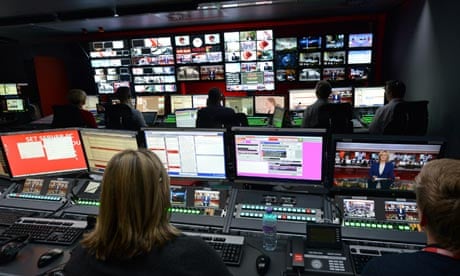We have come a long way. Most industries now have a fairly good handle on their key social and environmental impacts. Most retailers know they can no longer ignore human rights breaches in their supply chains, most oil companies know that spills do not pass unnoticed. The elephants in the room have been identified.
But what are the key impacts of the media sector? What is media's contribution towards sustainability?
Could it be that the biggest emission of a media company is its content? The idea of a media company's social and intellectual influence being greater than its direct operational footprint has surfaced before and is gaining traction.
A TV broadcaster can cut its carbon emissions by a few tonnes, but what is the impact of its programming on viewers' carbon emissions?
A new report, Mirrors or Movers? Framing the debate about the social impact of media content, explores the topic in more depth and provides a framework for a meaningful discussion on this sensitive topic.
If we ever needed proof that the direct impacts of media production are dwarfed by those of industrial enterprises, here it is. Compare Vivendi – one of the world's biggest media companies – and Rio Tinto, a mining company. While comparable in terms of financial indicators and employee numbers, for every tonne of carbon emitted by Vivendi, Rio Tinto emits 87. For every drop of water consumed by Vivendi, Rio Tinto consumes 831.
On the other hand, Rio Tinto's reach is microscopic compared with Vivendi's. Media content, in all its forms, touches the daily lives of almost every human being on the planet. Media's footprint may be modest, but its "brainprint" is enormous. Yet very few media companies have made any serious attempts to measure and manage their content impacts as they relate to sustainability. In fact, they are measuring more or less the same things as Rio Tinto.
So where do we go from here? Should the media sector actively seek to shape public debate, change behaviours and promote sustainable lifestyles as its contribution to social responsibility?
No, one argument goes, what legitimate rights does media have to do this? The media's role is to treat opposing views fairly, explore the evidence behind claims and generally support the plurality, complexity and fine balances within society.
But another argument says, yes, exposing audiences to new and existing ideas and causes would make the world a better place. Arguing that media does nothing but simply reflect societal norms and behaviours is meaningless. Media "takes sides" all the time; why not do this in a structured, transparent way?
The question is whether media companies are mirrors or movers. Do they reflect the norms and behaviours already present in society or do they actively change who we are and how we see things? This can easily turn into an academic discussion about principles. Our aim in writing the report has been to open up a practical debate about how, not if, media content moves society.
Our thesis is that any form of media content – be it a computer game, an advertisement or a scientific article – has an impact through one (or more) of six modes. It can be:
Questioning
Challenging existing practices and structures in society, highlighting adverse effects and bringing to light hidden information that leads to subsequent changes in policy or behaviour. Think of investigative journalism and, say, the Prism exposé.
Campaigning
Deliberately taking a partisan stance on an issue, topic or product with the explicit aim of selling, changing behaviour or raising money. Think of campaigns such as Dove's Real Beauty ads or the Times's Cities fit for cycling.
Inspiring
Stimulating action via changed perspectives, alternative futures or by highlighting different ways of behaving. Think of Channel 4's Superhumans coverage of the Paralympics and the result in changed perceptions.
Silencing/amplifying
Ignoring, restricting or giving disproportionate voice on certain topics, events or groups, knowingly or not, with the effect of skewing representation of society. Think of phenomena as diverse as media coverage of climate-change sceptics and the rise of celebrity culture.
Normalising
Introducing or legitimising forms of behaviour that may otherwise be unknown or marginal. Consider, for example, the role of soaps in changing fertility rates or the hotly contested link between computer games and violent behaviour.
What next?
For a media company wanting to actively manage its influence, the first challenge is to map where existing impacts reside, what modes are already in play and only then to consider what the desired future should look like.
And yet it is no simple matter for media companies to merely add this to their list of things to manage. There are huge questions concerning the legitimacy and practicalities of managing the brainprint. Any near-term response framed in terms of what media companies should or must do should be treated with suspicion.
We believe there is a need for other stakeholders to respond to the debate, perhaps starting with the following questions:
Are the six modes we suggest the correct ones? What have we missed?
Should media companies take responsibility for the impacts of their content?
If so, what mechanisms should be in place regarding the undesirable effects of blurring editorial/creative processes and corporate responsibilities?
What tools do media companies need to begin to address this?
Christian Toennesen is senior partner at Carnstone Partners LLP and the manager of Media CSR Forum.
This content is brought to you by Guardian Professional. Become a GSB member to get more stories like this direct to your inbox.

Comments (…)
Sign in or create your Guardian account to join the discussion